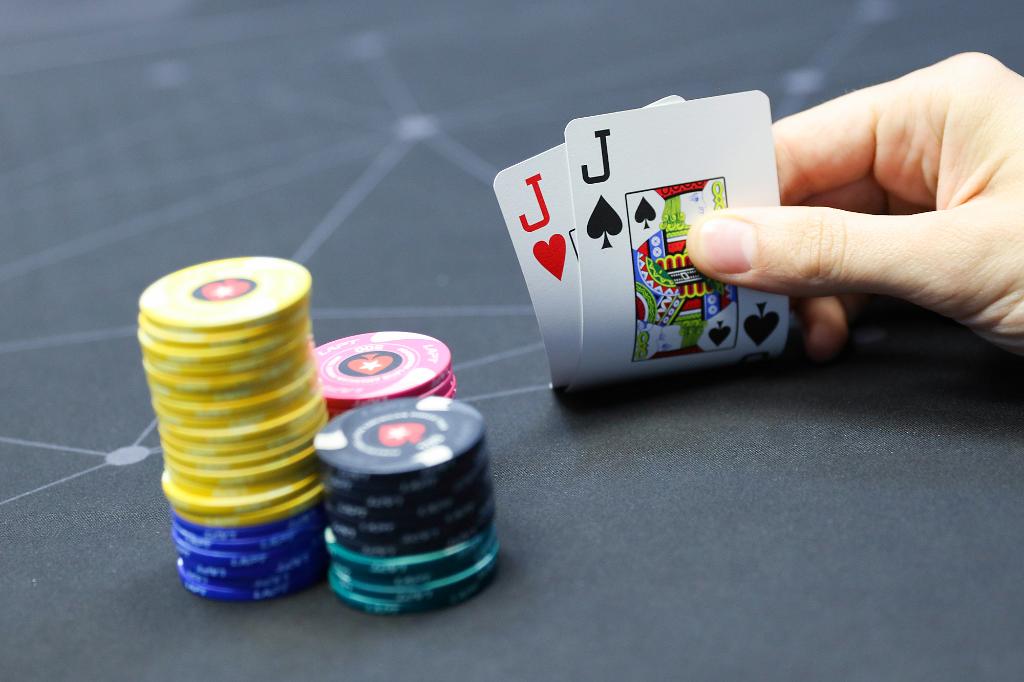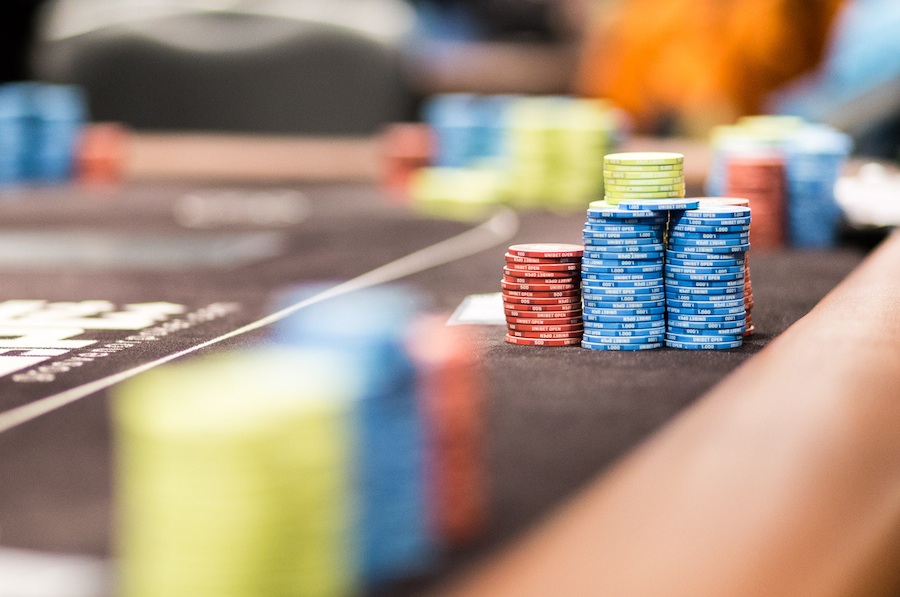Introduction
What Are Blinds In Poker: In the world of poker, blinds play a crucial role in shaping the dynamics of the game and driving the action forward. Blinds are mandatory bets placed by players sitting in specific positions at the table before the cards are dealt. They create an initial pot and set the stage for strategic decision-making.
Blinds are typically used in games like Texas Hold’em and Omaha, where there is a rotating dealer button indicating the position of the dealer. The two players sitting to the left of the dealer button are required to post the small blind and the big blind, respectively. The small blind is usually half the size of the big blind.
The purpose of blinds is twofold. First, they ensure that there is value in the pot right from the start, encouraging players to participate in the hand. Second, they create positional advantages and incentives for players to take calculated risks and make strategic moves based on their position at the table.
Understanding blinds is essential for any poker player, as they influence the pace, strategy, and dynamics of the game. By comprehending their role, players can better navigate the complexities of poker and make informed decisions throughout each hand.

What is the purpose of blinds in poker?
The blinds are paid each hand by the players who are occupying the “small blind” and “big blind” seats at the table. Poker blinds help drive the action forward and prevent players from simply folding until they are dealt premium cards.
In poker, blinds are forced bets that players in certain positions are required to make before any cards are dealt. The purpose of blinds is to create an initial pot and stimulate action in the game. Blinds ensure that there is always something to play for, even if all players choose to fold their hands.
There are typically two types of blinds in poker: the small blind and the big blind. The small blind is usually half the size of the big blind. The players sitting to the left of the dealer position are responsible for posting these bets before the start of each hand.
Blinds serve multiple purposes in poker. Firstly, they initiate the betting and give players an incentive to participate in the hand. Secondly, they help maintain a steady pace of play by ensuring that there is always a cost to remain in the game. Lastly, blinds help prevent players from simply waiting for premium hands and encourage more strategic and aggressive play.
Overall, blinds play a crucial role in the structure and dynamics of poker games, adding an element of risk and strategy right from the start.
What should blinds be in poker?
The value of the blinds are determined at the start of the game and the small blind is usually half of the big blind. Let’s use an example. If there are three players in a game and the big blind is $10, the player to the left of the dealer, Player 1, would have to contribute $5 for the small blind.
The specific amounts for the blinds in poker can vary depending on the game and the betting structure being played. In most games, there are two blinds: the small blind and the big blind. The small blind is typically half the size of the big blind.
The exact amounts for the blinds are usually determined before the game starts and are based on the agreed-upon stakes or the rules of the specific poker variant being played. For example, in a $1/$2 no-limit Texas Hold’em game, the small blind might be $1 and the big blind $2.
In tournament play, the blinds increase gradually over time to ensure the game progresses and players are challenged to make decisions. The blind levels and structure are predetermined and follow a specific schedule set by the tournament organizers.
It’s important to note that the blind sizes are relative to the stakes being played and should be set at a level that is appropriate for the players’ bankrolls and the desired level of action in the game.
Ultimately, the specific blinds in poker are determined by the game’s rules, the stakes being played, and the agreement among the players or the structure of the tournament.
What is blind vs blind poker?
In online poker, blind-versus-blind action occurs when all the other players fold before the flop, leaving the small and big poker blinds to battle it out. In this scenario, the big blind is always in position, meaning that the small blind has to act first every time.
Blind vs. blind poker refers to a situation in a poker game where only the small blind and big blind are involved in a hand. This occurs when all other players at the table fold their hands, leaving only the blinds remaining to compete against each other.
In blind vs. blind scenarios, the dynamics of the hand can be different compared to regular hands involving multiple players. Since there are only two players involved, the positional advantage is limited, as both players are either in the small blind or big blind position.
Strategies and tactics can vary in blind vs. blind situations, and players may adjust their play accordingly. Factors such as the stack sizes, the strength of their hole cards, and the history or tendencies of their opponent can all influence the decisions made in these hands.
Blind vs. blind situations can present unique challenges and opportunities in poker games, requiring players to adapt their strategies and make the most of the limited information available.

Why are there 2 blinds in poker?
Having 2 blinds gives 2 players equity in the pot rather than just one presumably creating more action. A player with some equity in the pot (Even just 1/2 BB) is more likely to defend with a marginal hand than someone with no equity in the pot.
There are two blinds in poker, the small blind and the big blind, to ensure that there is a minimum amount of chips in the pot before the hand begins. The blinds serve as forced bets that create initial action and encourage players to participate in the hand.
The small blind is typically placed by the player to the left of the dealer button, and it is usually half the size of the big blind. The big blind is placed by the player sitting to the left of the small blind. The amounts of the blinds are predetermined based on the table stakes and are typically set to increase as the game progresses.
By having two blinds, it guarantees that there is already some value in the pot for players to compete for. This helps prevent players from simply folding and waiting for premium hands, as they would be forced to put chips into the pot regardless of their hand strength.
The concept of blinds ensures that there is action and incentive for players to play hands, making the game more engaging and dynamic.
Can you play poker without blinds?
It is possible to play without blinds. The minimum bet is then the lowest denomination chip in play, and tossing only one chip is considered as a call. Anything higher than that is considered a raise. Poker without blinds is usually played with everyone posting an ante to receive cards.
While blinds are a fundamental aspect of traditional poker games, it is possible to play a modified version of poker without blinds. Removing blinds can significantly alter the dynamics of the game and the strategy involved.
In a poker game without blinds, players would typically take turns being the dealer, and each player would be required to contribute an ante—a small, predetermined amount—before the hand is dealt. Antes ensure there is some initial value in the pot, similar to blinds, but they are contributed by all players instead of just the two designated blinds.
Playing without blinds and using antes can be seen in certain poker variations or home games where the structure is more relaxed. However, it’s important to note that blinds are widely used in professional tournaments and most casino poker games, as they help create action and maintain a certain level of gameplay pace.
Ultimately, whether you choose to play with or without blinds depends on the specific variant of poker being played and the preferences of the players involved.
What is the purpose of blinds in a game of poker?
The purpose of blinds in a game of poker is to ensure that there is always money at stake in each hand. Blinds are mandatory bets that are placed by two players before the cards are dealt. The player sitting to the left of the dealer posts the small blind, and the player to their left posts the big blind. The blinds create an initial pot that players can compete for.
By having blinds, poker games become more dynamic and incentivize players to participate actively. Blinds also prevent players from simply folding every hand without consequence, as they would need to pay the blinds periodically to stay in the game.
Additionally, blinds help facilitate the action and flow of the game by introducing a forced betting structure. They contribute to the strategic elements of poker by influencing players’ decisions regarding whether to call, raise, or fold based on their position and the size of the blinds. Overall, blinds play a crucial role in maintaining the integrity and competitiveness of poker games.
How do blinds impact the betting rounds and pot size in poker?
Blinds have a significant impact on the betting rounds and pot size in poker. Here’s how they influence the game:
1. Betting Rounds: Blinds initiate the betting action in each hand. After the blinds are posted, the player to the left of the big blind starts the betting round. This establishes a baseline for the minimum bet amount, and subsequent players can choose to call, raise, or fold based on their hand strength and the initial bets.
2. Pot Size: The blinds contribute to the initial pot size. The small blind is usually half the size of the big blind. As players continue to bet and raise, the pot grows, creating more incentive for players to stay in the hand and compete for the accumulated chips.
3. Pressure to Act: The presence of blinds creates pressure for players to act in each hand. Since the blinds represent mandatory bets, players who want to remain in the hand must at least call the amount of the big blind to continue playing. This ensures that there is always money at stake and encourages players to make strategic decisions.
Overall, blinds shape the betting dynamics and pot size in poker, setting the stage for the subsequent betting rounds and influencing players’ decisions throughout the game.
What strategies can players employ when playing with blinds in poker?
When playing with blinds in poker, players can employ various strategies to maximize their chances of success. Here are a few strategies to consider:
1. Stealing the Blinds: Since blinds are mandatory bets, players can attempt to “steal” the blinds by making aggressive bets or raises when they have a decent hand or when they sense weakness from the players in the blinds. This can help build their chip stack without having to see a flop.
2. Defending the Blinds: When in the small or big blind position, players should defend their blinds by calling or raising when they have a strong enough hand. This can prevent opponents from easily stealing their blinds and increase their chances of winning the pot.
3. Adjusting Bet Sizes: The size of the blinds can impact bet sizing decisions. In general, bets should be larger relative to the blind size to put pressure on opponents. This is especially true in later betting rounds when the blinds are larger.
4. Positional Advantage: Players should take advantage of their position relative to the blinds. Being in a late position allows for more information about opponents’ actions and can influence betting decisions. Players in early positions should be more cautious and selective with their hands.
5. Bluffing and Semi-bluffing: Bluffing and semi-bluffing can be effective strategies when playing with blinds. Skilled players can use these tactics to make opponents fold stronger hands or draw them into making costly mistakes.
Remember, strategies may vary depending on the specific poker variant and table dynamics. Adapting to the playing style of opponents and staying observant are key elements for success when playing with blinds in poker.

Conclusion
Blinds are an integral component of poker games, serving as mandatory bets placed by players in specific positions before the cards are dealt. They serve multiple purposes in shaping the gameplay and strategy. By establishing an initial pot, blinds ensure that there is value at stake right from the start, creating an incentive for players to participate and engage in the hand. Additionally, blinds create positional advantages, as players in later positions have more information and flexibility in their decision-making compared to those in earlier positions.
Blinds play a significant role in the dynamics of the game, influencing the betting rounds, pot size, and strategic choices made by players. They create an element of risk and reward, encouraging players to make calculated moves based on their position and the strength of their hand. Understanding how blinds work and adapting your strategy accordingly is essential for success in poker.
Whether you’re a seasoned player or a novice, comprehending the significance of blinds and incorporating them into your decision-making process will enhance your overall poker experience and improve your chances of winning.










